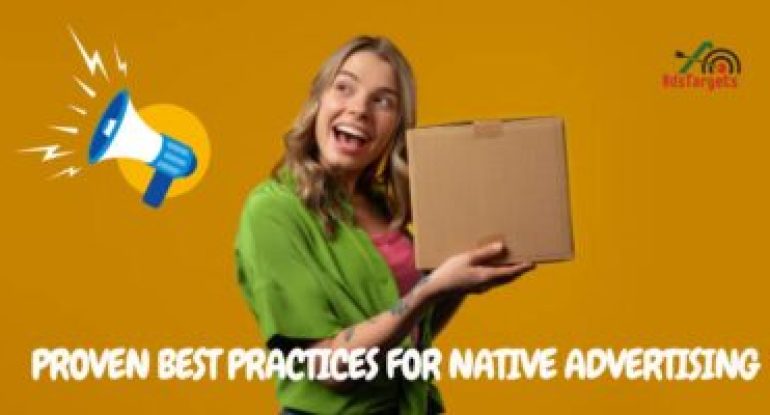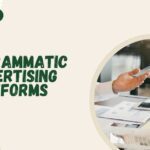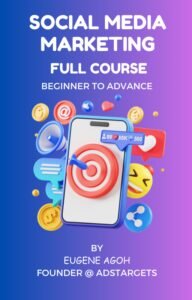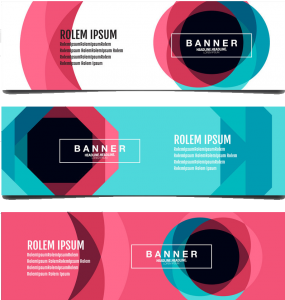A few years ago, native advertising was the shiny new tool every marketer wanted to experiment with -a fresh, subtle way to promote products without disrupting the user experience. Fast forward to today, and it’s no longer just a trend; it’s a core part of modern digital marketing. In fact, most advertisers now treat native as a key channel within their broader, multi-channel marketing strategy.
And the numbers don’t lie. In 2023 alone, U.S. spending on native ads jumped by 12% year-over-year, proving that this advertising format isn’t fading away anytime soon. Despite being one of the more “classic” programmatic advertising approaches, native advertising continues to attract investment because it works — it feels natural, delivers engagement, and builds trust with audiences in ways that traditional banner ads can’t.
So, what exactly makes native advertising special?
Native ads are designed to blend seamlessly with the surrounding content. They match the look, tone, and style of the platform they appear on — whether it’s a news site, blog, or social media feed. Instead of interrupting the user experience like pop-ups or flashy banners, native ads feel like part of the story. This subtle integration makes users more likely to engage with the content and trust the message behind it.
In this guide, we’ll explore the most common native advertising formats you can use in your programmatic campaigns and uncover the best practices for native advertising that can help you stand out in a crowded digital landscape. By the end, you’ll walk away with six powerful tips for creating native ads that actually deliver results — helping you attract clicks, build brand affinity, and maximize ROI.
If you’re ready to master the best practices for native advertising and learn how to make your ads feel more natural, engaging, and effective, keep reading — this is where your next great campaign begins.
Table of Contents
ToggleNative Advertising Formats to Know

Before we jump into best practices for native advertising, it’s important to understand the different formats available — because each one serves a unique purpose in your programmatic campaigns. Knowing where and how your native ads appear helps you design creatives that feel natural, drive engagement, and perform effectively across platforms.
Here are the three most common native advertising formats every marketer should know:
#1. In-Feed Native Ads
If you’ve ever scrolled through your social media feed and seen an ad that looked almost identical to a regular post — that’s an in-feed native ad. It’s one of the most popular native ad formats, and for good reason. These ads are mobile-first, visually cohesive, and designed to drive users straight to your website or landing page.
In-feed native ads often appear on platforms like Facebook, Instagram, Twitter (X), and LinkedIn, or even within editorial feeds on news sites and blogs. They blend so well with surrounding content that users often don’t realize they’re viewing an ad at first glance.
This format includes promoted posts, sponsored listings, and paid search results, making it a powerful way to connect with audiences without breaking their browsing flow. According to best practices for native advertising, make sure your visuals and tone align with the platform’s organic content — that’s the secret to keeping it engaging and click-worthy.
#2. In-Ad Native Advertising
In-ad native ads take the familiar structure of traditional display ads but add the natural, integrated look that defines native advertising. They include key elements like an image, headline, short text (body), and brand logo — yet they appear within a site’s display inventory in a way that feels cohesive and relevant.
This format is particularly effective when native ad inventory is limited but you still want to capture that same “non-intrusive” appeal. The ad may technically be placed in a display slot, but it’s designed to match the context and visual identity of the page it’s on.
When applying the best practices for native advertising here, focus on relevance and consistency — make sure the ad content aligns with the surrounding editorial environment and provides real value or interest to the reader. That balance between context and creativity is what makes in-ad native ads perform so well.
#3. Content Recommendation Widgets
You’ve probably seen these before — little boxes at the bottom of an article that say things like “Recommended for you” or “You might also like…”. Those are content recommendation widgets, one of the most widely used native advertising formats for content discovery.
These widgets help publishers monetize their content while giving advertisers a chance to reach a massive audience in a cost-effective, high-visibility way. They typically lead to sponsored articles, videos, or product pages that expand on a topic the reader is already interested in — making them a natural extension of the browsing experience.
If you’re using this format, remember that the headline and thumbnail image matter most. They’re what grab attention and drive clicks. Keep your titles curiosity-driven but relevant, and use imagery that complements the article’s tone.
In summary, understanding these three formats — in-feed, in-ad, and content recommendation widgets — lays the groundwork for mastering best practices for native advertising. Once you know where your ads will appear and how they blend into each environment, you’ll be better equipped to craft creatives that engage users, earn clicks, and deliver real results.
6 Tips for Native Ad Creative That Drives Engagement

Now that you understand the main formats, let’s move on to what really makes your campaign shine — creating native ads that truly engage people. Crafting the right ad creative can be the difference between a scroll-past and a click that converts. Here’s how to make your native ads irresistible.
#1. Write a Compelling Headline
Your headline is the very first thing people notice, so it’s your golden ticket to grabbing attention. In best practices for native advertising, your headline should instantly make people stop, think, and click. A strong headline doesn’t just describe your offer — it sparks curiosity, emotion, or relevance.
One simple trick? Ask a bold question. Questions pull readers in because they naturally want to know the answer. For example, instead of writing “Improve your skincare routine,” try “Is your skincare routine secretly aging your skin?” That kind of curiosity-driven headline makes users want to click and find out more.
But here’s the catch — make sure your ad content actually answers the question or delivers on the promise. Otherwise, people will feel misled and won’t trust your future ads. Remember, best practices for native advertising are all about authenticity and value.
Another key point: keep your language simple and clear. Many marketers fall into the trap of writing headlines that make perfect sense to product experts but sound confusing to regular people. If your audience doesn’t immediately understand what you’re saying, they won’t click.
Focus on clarity and emotion. Use everyday words, speak directly to the reader, and highlight what’s in it for them. For example:
#1. “Discover the 3 secrets to glowing skin.”
#2. “Tired of slow Wi-Fi? Try this simple fix.”
The best native ads sound like helpful content — not sales pitches. So when you write your next headline, think like your audience. What problem are they trying to solve? What would make you click if you saw the same ad while scrolling?
If you can answer that, you’re already halfway to creating native ads that drive engagement and stand out in any feed.
#2. Leverage the Description to Drive Click-Throughs

When it comes to best practices for native advertising, your ad description is your secret weapon. Think of it as the second chance to convince people that your content is worth their time. While the headline grabs attention, the description seals the deal by showing readers exactly what they’ll gain when they click.
The beauty of native ads is that they give you space to say more than just a flashy one-liner. In your description (or subheading), you get to expand on your message and clearly communicate the value your audience will get from your content. This is your opportunity to answer the “why” behind the click — why should they care, and why should they take action now?
A smart way to write your description is to pull inspiration directly from the content you’re promoting. If your ad leads to a blog post, video, or landing page, borrow a powerful sentence or key idea from it. This creates a sense of consistency and keeps your audience’s expectations aligned. Remember, one of the best practices for native advertising is making sure your ad and destination feel like part of the same story.
Here’s a pro tip: if your headline asks a question, use the description to provide a hint of the answer. For example:
Headline: “Is your morning routine making you tired instead of energized?”
Description: “Discover 5 small changes that can help you wake up refreshed and ready to take on the day.”
See how that works? You’ve built curiosity, but you’ve also reassured readers that the content delivers real, actionable value.
Keep your tone conversational and easy to understand — like you’re talking to a friend. Avoid stuffing in too many details or salesy language. Your goal isn’t to overwhelm; it’s to spark interest and inspire a click.
In short, your description should clarify, connect, and convert. It’s the bridge between curiosity and action — and when written well, it can dramatically boost your ad’s performance.
#3. Write Native Ad Copy in Natural Language
One of the best practices for native advertising is keeping your ad copy simple, relatable, and human. If your writing sounds too formal, academic, or robotic, people will scroll right past it. Remember — native ads blend into the natural flow of the content people are already reading or watching, so your message needs to feel like part of that experience.
The goal is to sound authentic and conversational, not like you’re giving a lecture or pitching a hard sale. Think of it as talking to your audience the same way you would to a friend — relaxed, genuine, and easy to understand. When your language feels natural, people are far more likely to connect with your message and take action.
Here’s the trick: use everyday words and short, clear sentences. Avoid industry jargon or complicated phrases that might confuse readers. Instead of saying “maximize your operational efficiency with cutting-edge solutions,” say “get more done, faster, with tools that actually work.” See how much smoother and friendlier that sounds?
Another part of writing in natural language is showing empathy. Talk about real problems and offer relatable solutions. Let your audience see that you understand what they care about. When your tone is genuine, you earn trust — and trust is what makes people click, read, and eventually convert.
Following the best practices for native advertising also means maintaining consistency in tone across your ad and landing page. If your ad sounds fun and friendly but your landing page reads like a legal document, that disconnect will push users away.
In short:
Be conversational, not corporate.
Be human, not hard-sell.
And always keep your message clear, simple, and genuine.
Because when your copy feels natural, it doesn’t just catch attention — it keeps it.
#4. Include a Clear Call to Action (CTA)

One of the best practices for native advertising is making sure every ad has a clear, strong call to action (CTA). A great ad might grab attention, but without a proper CTA, your audience won’t know what to do next — and that means you’ll miss out on valuable clicks and conversions.
Even though native ads blend naturally into the content people are already viewing, you still need to guide them toward the next step. Whether you want them to sign up, learn more, subscribe, or start a free trial, your CTA should clearly spell that out. Think of it as giving your audience a friendly nudge in the right direction.
For instance, instead of a vague “Learn more,” go for something direct and meaningful like “Start your free trial today” or “See how it works in 2 minutes.” These kinds of CTAs tell people exactly what to expect after they click — and that transparency builds trust and increases your click-through rate.
When it comes to best practices for native advertising, your CTA should also match the tone of your ad copy and content. If your ad is casual and conversational, keep your CTA in that same friendly voice. For example, “Let’s get started” or “Grab your free guide now” can feel more inviting than something stiff or overly formal.
Also, don’t be afraid to experiment with CTA placement. Depending on the ad format, your CTA might perform better at the end of the text or integrated naturally within the description. Use A/B testing to find out what resonates most with your audience.
To sum it up:
Be clear about what action you want users to take.
Make your CTA sound natural and inviting.
Keep it consistent with your ad tone and intent.
A powerful CTA doesn’t just tell people what to do — it makes them want to do it.
#5. Design Native Ads With Inclusivity in Mind
When thinking about best practices for native advertising, one of the most overlooked—but most important—elements is inclusive design. It’s not just about making your ad look good; it’s about making sure everyone can see, read, and connect with your message.
Inclusive design means creating ads that welcome and work for people of all abilities, backgrounds, and preferences. In other words, your native ad shouldn’t feel like it’s made for one type of person—it should be inviting to as many people as possible.
Start with accessibility. Not everyone experiences the web the same way, so your visuals should be clear, legible, and easy on the eyes. Avoid using low-contrast images or hard-to-read color combinations. A simple rule of thumb: dark text on a light background or light text on a dark background works best for readability. This small design choice can make a huge difference for users with visual impairments or those viewing your ad in bright lighting conditions.
But inclusivity goes beyond colors. Think about representation in your visuals. Use images that reflect real-world diversity—different ages, races, genders, and abilities. When people see themselves represented in your ad, they’re more likely to engage and trust your brand. That’s one of the most powerful best practices for native advertising — making sure your audience feels seen and valued.
Also, consider how your ad performs in different environments. Will it still look good and be easy to understand on mobile? What about in low bandwidth areas? Inclusive design anticipates these challenges so that every user has a smooth experience.
Here are a few extra pointers to keep your native ads inclusive and engaging:
#1. Use clear fonts that are easy to read on all devices.
#2. Add alt text for images so users relying on screen readers can understand your message.
#3. Avoid using text-heavy graphics—keep things simple and direct.
#4. Test your ads with real users from different backgrounds to catch potential accessibility issues early.
At the end of the day, inclusivity isn’t just good ethics—it’s smart marketing. When you design native ads with everyone in mind, you build stronger connections, boost engagement, and make your brand more relatable to a broader audience.
#6. Drive Traffic to High-Quality Content That Delivers Real Value
When it comes to best practices for native advertising, one golden rule stands tall — always drive your audience to high-quality, valuable content. Your native ad shouldn’t just be a clickbait gateway; it should lead users somewhere meaningful — a blog post, landing page, or video that truly offers value and leaves a lasting impression.
Think of your ad as an invitation, not a hard sell. When users click, they’re expecting something that either solves a problem, answers a question, or gives them insight they didn’t have before. If what they find is shallow or overly promotional, they’ll lose trust fast. But when your content educates, entertains, or empowers, you earn credibility — and that’s how you turn a casual click into a loyal follower.
So, how do you make your destination content worth the click?
#1. Focus on relevance: Make sure the content connects directly to your ad’s promise. If your ad teases a solution, deliver it fully in your article or video.
#2. Provide genuine value: Whether it’s a how-to guide, insightful blog, or short video, give readers something they can actually use. This not only boosts engagement but also improves your brand’s reputation.
#3. Keep it easy to digest: Use clean formatting, bullet points, and visuals that make your content enjoyable to consume. A cluttered or confusing page kills momentum.
#4. Add a subtle call-to-action (CTA): After delivering value, guide users to the next logical step — maybe signing up for a newsletter, downloading a resource, or exploring your product.
Following best practices for native advertising means putting your audience first. Your goal isn’t just to get the click — it’s to keep them engaged after the click. High-quality content creates that bridge between curiosity and conversion.
Remember, great native advertising doesn’t just attract traffic — it earns attention. When your content feels authentic, relevant, and helpful, users don’t just visit; they stay, share, and return. That’s where real brand trust begins.
Conclusion
At the heart of every successful native advertising campaign lies one simple truth — authenticity wins. When you understand the best practices for native advertising, you’re not just creating ads; you’re crafting experiences that feel natural, engaging, and valuable to your audience.
From choosing the right native ad formats to writing conversational copy, using inclusive visuals, and driving users to meaningful content, every step plays a vital role in how your audience perceives your brand. Native ads thrive on subtlety — they blend in, but they stand out by delivering genuine value.
As you build your next campaign, focus less on selling and more on connecting. Write as if you’re speaking directly to your audience, design with accessibility in mind, and always ensure your content delivers on the promise your ad makes. That’s the real secret behind best practices for native advertising — creating an experience so seamless and authentic that users don’t feel marketed to; they feel understood.
When done right, native ads don’t just drive clicks — they build relationships, trust, and long-term engagement. And in today’s attention-driven digital landscape, that’s the kind of impact every brand should aim for.








